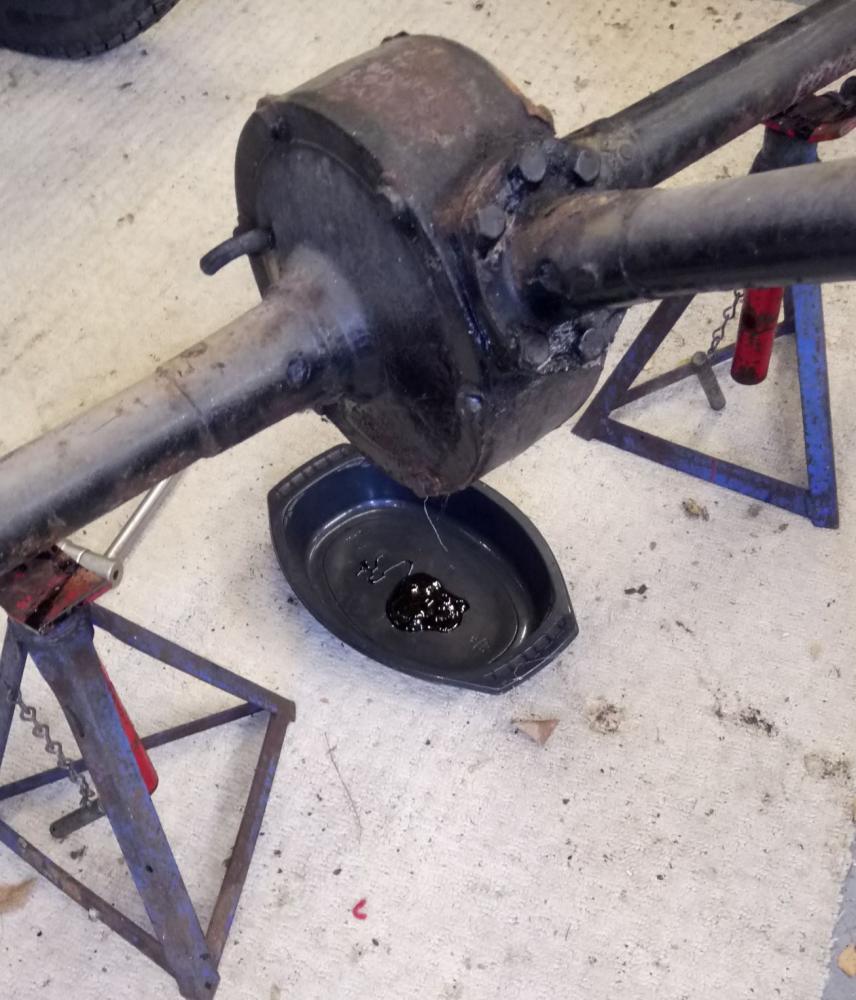Oh dear. Opened up the axle drain plug today, look what came out. 94 year old oil/grease mixture.

I would be interested to get peoples view on a couple of things:
a)
What to do next. I could:
- Strip the axle completely, bearing in mind it's a thrust bearing and shims type axle, wash out all the remaining grease/oil, rebuild and adjust. 35+ hours?
- Part strip the axle (side casing off, crown wheel + diff out), clean out most of the remaining lubricant, reassemble, refill with 140HD and change after 50 miles.
- Not strip at all, leave to drain for a week, fill with 140HD and change after 50 miles.
- Not strip but fill with diesel, turn vigorously with an electric motor for an hour, drain, fill with 140HD, change after 10 miles and again after 50 miles.
b)
140HD in these early axles.
The Austin Motor Co. started filling axles with oil in June 1929, stating that:
"It is not desirable to use oil for lubricating any of the axles which left our works with a mixture of grease and oil, as slight modifications were made to the axles at the time oil was adopted, to render the oil retaining devices as far as possible immune from leakage. The result of using oil in one of these axles would possibly mean leakage of oil, with the consequent necessity for more frequent replenishment. From a lubricating point of view, however there is no reason why oil should not be used in any axle, however old the car; it is purely a matter of the oil retaining qualities"
(Service journal, Vol 3, No4, November/December 1929)
However, I can't find changes in the parts list to the axle (it was a screw-in torque tube axle, in use from May 1929) to reflect these "slight modifications". Was it just that as oil hadn't been tested in the earlier axle, the Austin Motor Co. were reluctant to say it was OK?
I ran my original 1927 Chummy axle on 140HD for some years before changing the entire axle to a 30/31 type and it didn't leak anywhere. Noisy, yes but no leaks.
What's the perceived wisdom folks?




